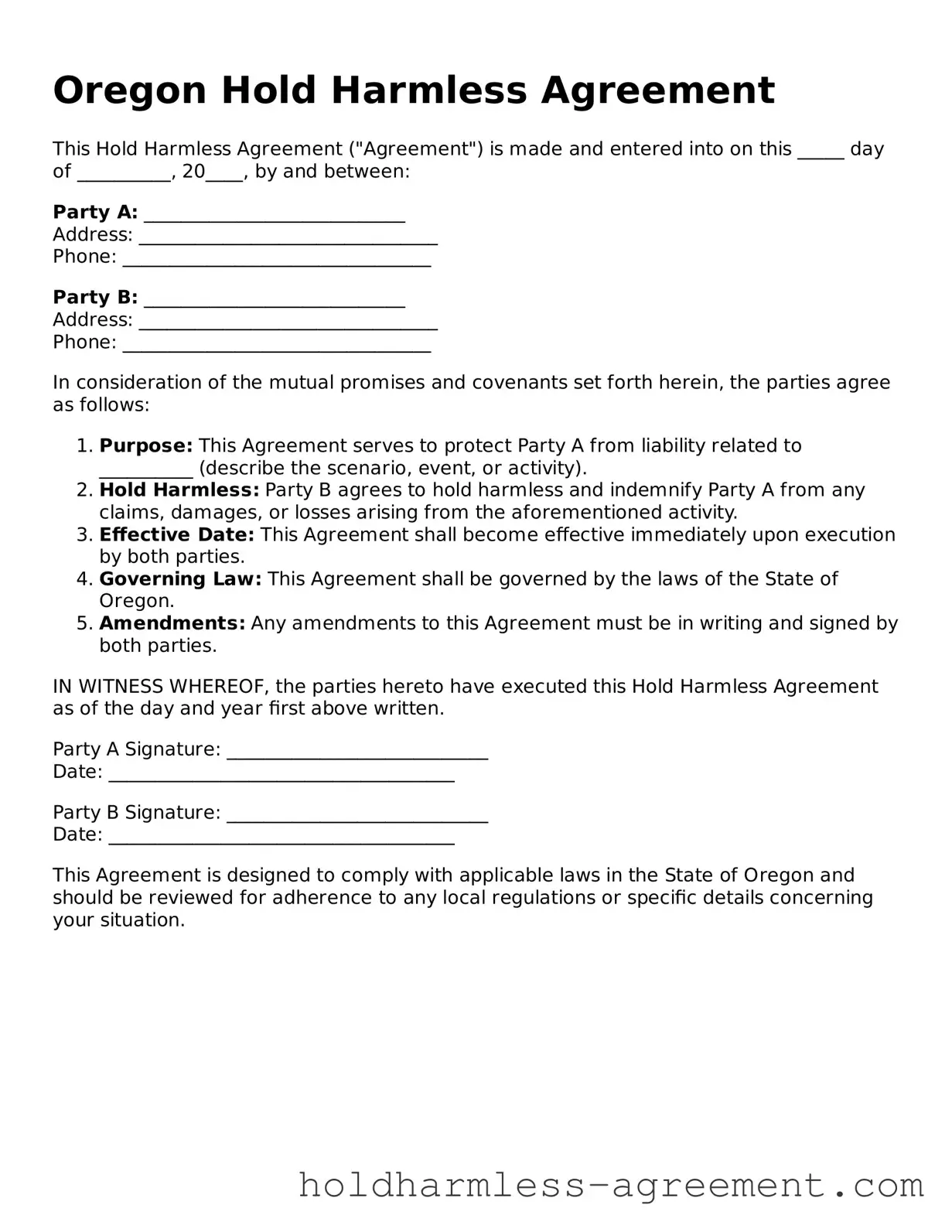What is the Oregon Hold Harmless Agreement?
The Oregon Hold Harmless Agreement is a legal document that protects one party from liability or legal claims arising from the actions or negligence of another party. This agreement is often used in various situations, such as events, construction projects, or rental agreements, to ensure that one party will not be held responsible for any injuries or damages that may occur.
Who typically uses the Hold Harmless Agreement?
This agreement is commonly used by organizations, businesses, and individuals. For instance, event organizers may require participants to sign the agreement to limit their liability. Similarly, landlords might ask tenants to sign a Hold Harmless Agreement to protect themselves from potential claims related to property use.
What are the key components of the agreement?
A typical Oregon Hold Harmless Agreement includes several important elements:
-
Identification of Parties:
The agreement should clearly identify the parties involved, including names and addresses.
-
Scope of Liability:
It outlines the specific activities or situations for which liability is being waived.
-
Indemnification Clause:
This section states that one party agrees to cover any legal costs or damages incurred by the other party.
-
Signatures:
Both parties must sign the agreement to make it legally binding.
Is the Hold Harmless Agreement legally binding?
Yes, when properly executed, the Oregon Hold Harmless Agreement is legally binding. However, its enforceability can depend on several factors, including clarity of language and whether it complies with state laws. Courts may not enforce agreements that are deemed overly broad or that attempt to waive liability for gross negligence or intentional misconduct.
Can the Hold Harmless Agreement be modified?
Yes, the agreement can be modified as long as both parties agree to the changes. It is advisable to document any modifications in writing and have both parties sign the updated agreement to ensure clarity and avoid future disputes.
Are there any risks associated with signing this agreement?
Signing a Hold Harmless Agreement may involve risks. By signing, a party may waive their right to seek compensation for injuries or damages that occur due to the other party's negligence. It is essential to read the agreement carefully and understand its implications before signing. Consulting with a legal professional can provide additional clarity and protection.
Oregon Hold Harmless Agreement forms can be obtained from various sources. Many legal websites offer templates that can be customized to fit specific needs. Additionally, local government offices or legal aid organizations may provide resources or guidance on creating a Hold Harmless Agreement. It is important to ensure that any form used complies with Oregon state laws.
